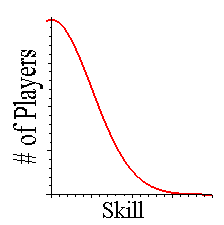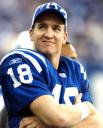Nerds on Sports University: LUCK
In the last Nerds on Sports University, I gave you a very technical and involved statistic. This time, I’m going for something a little more light hearted. Today, I will tell you about the pitching stat LUCK. LUCK isn’t an acronym for anything it’s just luck.
Before I get into LUCK itself, let’s look at pitchers Expected Win-Loss [E(W) & E(L)]. We all know that Wins and Losses are very dependent on how the rest of the pitchers team and your bullpen, especially if you’ve been watching Bronson Arroyo this year (Luck -6.31). To calculate E(W) and E(L) we look at the pitchers innings pitched and runs allowed for each game and compare that to the same pitching line’s wins and losses historically. So if a pitcher went 6 innings and gave up 5 runs you would expect them to get a win 30% of the time. So the E(W) is .3 and the E(L) is .7.
To get LUCK we compare the expected numbers to the actual numbers. Taking the difference between the expected numbers and the actual numbers and adding that together (W-E(W)) + (E(L)-L) is LUCK. So a pitcher with a high LUCK is lucky and their team is helping them out. I hope you enjoy LUCK, and I will end this class with some current LUCK stats. Read More
 That’s the idea of Replacement Level, now the hard part: how do we calculate that level so we can compare it to all players? First off Major League baseball players don’t fall into a pretty bell curve, they fall more into the front half of a bell curve (see picture) where there are very few players with the most baseball skill (right side of chart) and a ton of players that play in softball leagues across the world (democratic side).
That’s the idea of Replacement Level, now the hard part: how do we calculate that level so we can compare it to all players? First off Major League baseball players don’t fall into a pretty bell curve, they fall more into the front half of a bell curve (see picture) where there are very few players with the most baseball skill (right side of chart) and a ton of players that play in softball leagues across the world (democratic side). There’s a line in The Hunt for Red October where the Russian sub’s navigator boasts about being able to “fly a plane in the Alps with no windows” with a compass and a map. Well, I could manage a professional baseball team in an underground bunker with no windows given a spreadsheet with the team’s stats, and this table.
There’s a line in The Hunt for Red October where the Russian sub’s navigator boasts about being able to “fly a plane in the Alps with no windows” with a compass and a map. Well, I could manage a professional baseball team in an underground bunker with no windows given a spreadsheet with the team’s stats, and this table.
 Even without access to a laptop, the Internet and a century of baseball statistics at the time, I knew in my heart that that was false. First, because Joe Morgan was saying it with authority. And second, because, well, when you’re pitching to a guy who hits .318 on a bad season, you’ll occasionally throw a few outside.
Even without access to a laptop, the Internet and a century of baseball statistics at the time, I knew in my heart that that was false. First, because Joe Morgan was saying it with authority. And second, because, well, when you’re pitching to a guy who hits .318 on a bad season, you’ll occasionally throw a few outside. The problem is, those benchmarks were set in 1971 and have not been revised since. The “yards per pass” metric, which figures an average of 7, punishes QBs whose coaches use the fire-and-forget “West Coast Offense.” Is a 5.5% interception percentage still average? Look at the numbers yourself and tell me: as of
The problem is, those benchmarks were set in 1971 and have not been revised since. The “yards per pass” metric, which figures an average of 7, punishes QBs whose coaches use the fire-and-forget “West Coast Offense.” Is a 5.5% interception percentage still average? Look at the numbers yourself and tell me: as of